#inuvialuit
Text
I just want to say that as someone who is Native Hawaiian on my moms side and Inuk/Italian on my dads Sokka, Katara, and both of the water tribes meant so much to me as a child and even now
If there are native characters in media (ESPECIALLY INUK) usually they’re marked as token characters and not given a whole lot of depth, much less made a main character
It’s gotta be one of the largest reasons I will watch A:tLA and LoK for the rest of my life, the cultural accuracy (for the most part) and representation is unmatched in any other media
#avatar the last airbender#sokka#atla#sokka avatar the last airbender#Katara#southern water tribe#northern water tribe#Inuk#Inuit#inuvialuit#native representation#native hawaiian
78 notes
·
View notes
Photo

Inuvialuit man and woman, later identified by family as John Kallack and Angele Omiglok, with two children. Photograph taken in Kugluktuk (Coppermine), NWT. Verso reads “"Kalla, wife and family at Coppermine 1944-45."
L.A. Learmonth / Hudson’s Bay Company Archives
via Indigenous Archival Photo Project
121 notes
·
View notes
Photo

Fishing line alarm/rattle / probably Inuvialuit [Mackenzie Delta] (attributed) / Hide, seal claw/claws / strung. x
80 notes
·
View notes
Text
A new agreement assures shared decision-making concerning oil and gas rights in Canada’s Western Arctic – Tariuq (Offshore).
It’s the first of its kind with an Indigenous government as a full party.
It was signed last Thursday in Inuvik.
The signatories are Duane Ningaqsiq Smith, the Inuvialuit Regional Corp. chair and chief executive officer; Dan Vandal, the minister of Northern Affairs and Minister responsible for PrairiesCan and CanNor; Northwest Territories Premier Caroline Cochrane; and Yukon Premier Ranj Pillai.
The signing event was cut short due to heavy smoke in Inuvik, which caused poor air quality and concerns of reduced visibility for flights. [...]
Continue Reading.
Tagging: @politicsofcanada
#cdnpoli#Yukon#NorthWest Territories#big oil#Indigenous persecution#Indigenous politics#Inuvialuit#neoliberalism#colonialism
28 notes
·
View notes
Note
Have you studied any of the languages of the Canadian First Nations?
Yes, I've studied Siglitun and Uummarmiutun, which are from the same dialect continuum. The reason I studied these two languages in particular is because there were a series of grammars and dictionaries produced on these two languages plus one other written by Ronald Lowe. They were funded by C.O.P.E. (the Committee for Original Peoples Entitlement). I've got a link to one of them right here on Amazon, and if you can pick up even one of the six in this series, I highly, highly recommend it. The grammar is a bit dense, and it's written in a way that won't be super familiar to linguistics students (it's a little antiquated, published in 1984, and from Canada), but it's presented very thoroughly, and very well, with lots of example sentences—and, really, with these languages the examples are utterly vital. These are agglutinative and highly synthetic languages, but like all languages, there's more to the meaning than adding up the meanings of the parts.
I ran across two of these books at the UCSD library when I was a grad. student, and I checked them out continuously for something like six years (lol—as a grad. student, you can check a book out for a year, unless someone asks for it back). They made quite an impression on me. I was very fortunate to find a couple of them on Amazon, and have received some others as gifts (a couple from my brother-in-law Will, and a couple from @quothalinguist). If you read The Art of Language Invention, you will have seen an example from Siglitun that I produced using the information in the corresponding book in the series, and @quothalinguist and I made good use of the books when we produced our polysynthetic mouse language Wokuthízhű in season 3 of LangTime Studio.
I'm a big fan of these languages, but of the three, my favorite is Siglitun, due to the phonology.
Thanks for the ask!
#language#siglit#siglitun#uummarmiut#uummarmiutun#inuit#inuvialuit#conlang#wokuthízhű#langtime#langtime studio#lts#theseviolentdelights22
72 notes
·
View notes
Photo

“DANCING ESKIMOS WORRY MOUNTIES,” Montreal Gazette. August 10, 1942. Page 18.
----
'Aristocrats' Motor Down River, Dance all Night, Sleep All Day - Ottawa Objects
----
Toronto, August 9. (CP) - Bishop R. J. Renison, who recently returned from a tour of the Canadian north, said in his sermon tonight at St Paul's Church here that sophisticated Eskimos were creating new problems for the Royal Canadian Mounted Police to solve.
He said wealthy Eskimo "aristocrats" who own large and expensive motor boats could buy un-rationed gasoline. They came down to the Mackenzie River with their own ideas of celebrating a good hunting season.
They danced all night and slept all day and the R.C.M.P. had to keep awake to act as chaperones in addition to their daylight duties. When the stamina of the Mounties gave out, officials at Ottawa had to issue an order that during the month of June dances should be held only twice a month and should end at 4:30 a.m.
Bishop Renison said a deputation of the Eskimos called on him during his two-month visit to the Arctic ocean.
"They asked whether Canada was a free country." he continued. "I said it was. So they wanted to know why they could not do as they liked, if Canada really was free. It was nobody's business if they wanted to dance at night and sleep in the daytime. I told them that we thought we were free in Toronto, but we could not do many things that they were allowed to do."
[AL: This panicked report from a bishop on the Inuvialuit of the Mackenzie Delta, who refused to work during the day and throw back the claims of Canada to be a free country fighting for democracy is a fascinating if depressing little insight into settler colonialism and resistance in Canada.]
#inuit#inuvialuit#mackenzie river#settler colonialism in canada#settler colonialism#royal canadian mounted police#dictatorship within democracy#white supremacy#midnight sun#hunting season#anti-indigenous racism#indigenous people#far north#canadian arctic#canada during world war 2#christian missionaries#christian supremacy
5 notes
·
View notes
Text
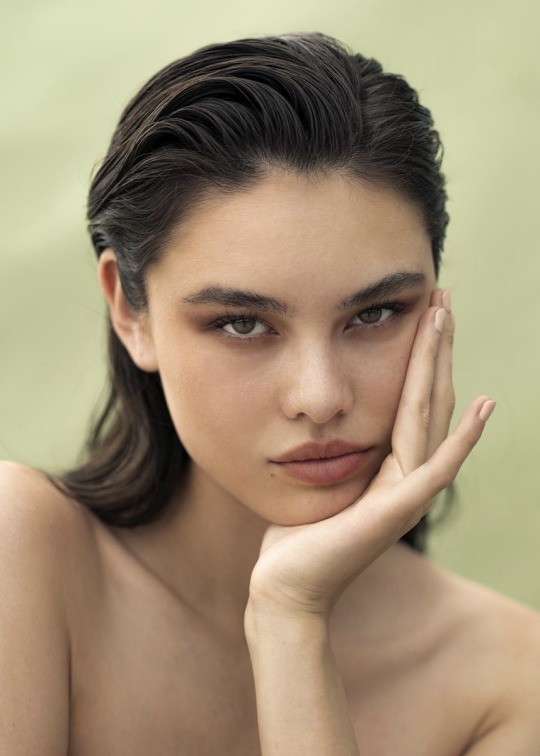

Willow Allen - Inuvialuit Indigenous Canadian, 1998
#face claims#female face claims#face claims central#models#character inspiration#fan cast#female models#beautiful girls#fancast#wattpad#canadian#indigenous face claims#indigenous models#inuvialuit#canadian models
0 notes
Text


indigenous fc's you could consider playing #2
willow allen
she/her (female)
inuvialuit
22-23
@ willow.allen
152 notes
·
View notes
Text
I have a terrible problem to get obsessed with reading books that don’t exist online.
Like first, last year when I went to Chiapas I got obsessed with reading Frans Blom and Gertrude Duby’s Selva Lacandona. Which did not exist as a pdf and had ONE copy in a local library. thankfully, a very kind local anthropologist scanned it fully for me and sent it. Which is like the most loved I’ve ever felt in my whole life.
And now, I really want to read Bob Cockney’s I, Nuligak. Which is nowhere online. And I have not checked in my university’s library but I doubt it’ll be there. Who will save me now.
#hugo talks#i just did a little essay on Inuvialuit self government#and i found a lot of quotes from it but not the complete text!!!!#aaaaaaaaaa
0 notes
Text
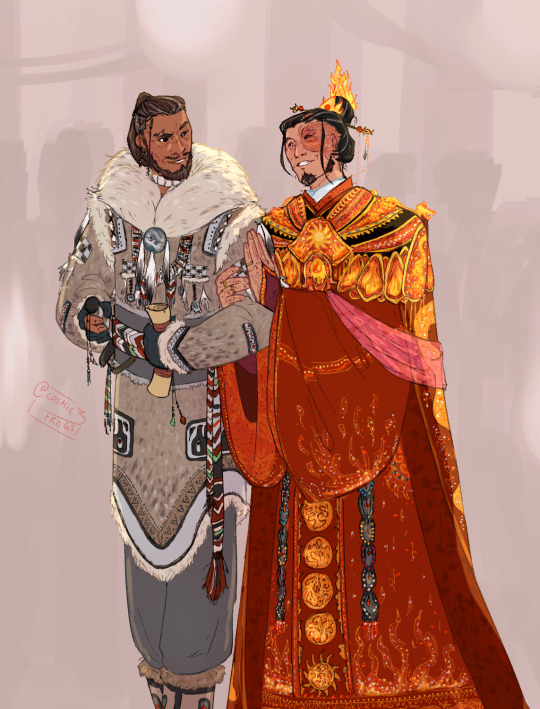
I wanted to go a bit more in-depth with this piece that I did for zukka week 2023 because i got inspired to do more insane clothing details. ID in ALT.
Ramble about the influences/inspirations below:
Design inspirations for Sokka's clothing are mainly Inuvialuit and Yup'ik, with Nenets, Tlingit, and Chukchi inspiration for the tassels, patterns, belt and beadwork. I mixed these with the ornaments canon shows us used by the Northern Water Tribe, and also in Legend of Korra. I got particularly excited about drawing from Inuvialuit sources since the tassels we see in canon look like they could be inspired by this. Going beyond canon's animation-friendly colour scheme, I drew from Nenets patterns/embroidery/sashes and Yup'ik beadwork for accent colours. I think in the future I'd like to find ways to incorporate more Tlingit-style patterns since I rarely see them in fanart (which is a shame - they're stunning), but since they tend to be very big I ultimately decided to only include them as a nod in order to keep the regalia recognisable as 'Water Tribe'. I wonder if I could start using Polynesian influences as well?
Zuko's headdress and particularly the shoulder garment and beaded embroidery draw heavily from women's clothing styles of Lê Dynasty Vietnam. The other main influence is men's royal clothing in Tang Dynasty China, and patterns worn by Mongolian Khatun. Since we have a bit more to go on in canon as to what fire nation regalia looks like, I blended that in as well. I got particularly excited about the embellishments on Lê Dynasty clothes because I could give a little nod to Zuko's dragon-fire by adding more colours to the embroidery. In the future I think I'd want to make the Mongolian influence a bit more obvious... perhaps even push the envelope by incorporating some Bashkir designs, though I'm not sure how well that will go.
#artfromthefrogs#zukka#sokka#zuko#avatar: the last airbender au#avatar: the last airbender#atla#atla fanart#avatar: the last airbender fanart#zukka fanart#zuko fanart#sokka fanart#water tribe#fire nation#older sokka#older zuko#older zukka#dilves zukkae#as i believe they are called#'i want to add more mongolian maybe even bashkir elements' <- man pushing the siberian agenda
19K notes
·
View notes
Note
When I was a kid, I heard not to call indigenous people Eskimo because it's derogatory. It means something to the effect of "eater of raw meat". "Inuit" was recommended instead.
As an adult, I've heard that they'd prefer Eskimo to Inuit because the former is a general term, whereas the latter is a specific tribe (and they hate getting confused with other tribes).
Inuit and Ojibwe are two tribes I've heard associated with Canada. I'd be interested in whatever other info (if any) you could dump on me.
Eskimo actually comes from the French word esquimaux, meaning one who nets snowshoes.
You are correct, Inuit is not the preferred term, while one group does use the term the hundreds of others do not.
To list a few terms used by the tribes aside from Inuit there is Inuvialuit, Inuinnaat, Inupiat, Yupiit, Cupiit, Yupiget, Yupik, and Sugpiat, but they can all be grouped under the term Eskimo as despite their varying cultures and traditions, all use snowshoes.
The Ojibwe live in both the United States and Canada and occupy land around the entire Great Lakes, including in Minnesota, North Dakota, Wisconsin, Michigan, and Ontario.
It'll be hard to name all of the tribes in Canada off the top of my head...
There are more than 630 tribal communities in Canada, which represent more than 50 Nations and 50 languages, but from the top of my head I can name the;
The Cree are one of the largest tribes in Canada. Their territory covers a vast area of Western Canada from the Hudson-James Bay region to the foot of the Rocky Mountains, and in Alberta between the North banks of the North Saskatchewan River to Fort Chipewyan.
The Dene have historically inhabited central and northwestern Canada in an area known as Denendeh, meaning “the Creator's Spirit flows through this Land” or “Land of the People.” This region includes the Mackenzie River Valley and the Barren Grounds in the Northwest Territories.
The Haida People have occupied Haida Gwaii since time immemorial. Their traditional territory encompasses parts of southern Alaska, the archipelago of Haida Gwaii and its surrounding waters.
The Niitsitapi, also known as the Blackfoot or Blackfeet Indians, reside in the Great Plains of Montana and the Canadian provinces of Alberta and Saskatchewan. Originally, only one of the Niitsitapi tribes was called Blackfoot or Siksika.
The majority of Métis live in the western provinces and Ontario, they are the product of tribal marriages with the French, they were rejected by both the tribes and the French and so formed their own tribe.
The Mohawk people are the most easterly section of the Iroquois Confederacy. They are an Iroquoian-speaking Indigenous people of North America, with communities in southeastern Canada and northern New York State, primarily around Lake Ontario and the St. Lawrence River.
The Nootka are a people who live on what is now the southwest coast of Vancouver Island, and on Cape Flattery, and the northwest tip of the state of Washington.
The Huron-Wendat are one of Québec's most urbanized Indigenous nations. Their cousins the Wyandot moved to Michigan, Ohio, Kansas, and Oklahoma.
Mi'kmaq communities are located predominantly in Nova Scotia and New Brunswick, but with a significant presence in Quebec, Newfoundland, Maine and the Boston area.
The Nuxalk people call themselves the Nuxalkmc. Traditional Nuxalk territory is the central coast of British Columbia, from the mouth of the Bella Coola River inland along the Bella Coola Valley and nearby inlets and channels.
Also, the Canadian Ojibwe tribes are the same as the American Chippewa tribes, like I mean they are the exact same tribe just called different names.
80 notes
·
View notes
Text
My Predictions for the Arctic Na'vi (Snow Na'vi:
They will either have more body fat, fur (or at least more body hair) or will wear heavy coats and or winter clothes, or a combination of the two of the three examples.
They will either have short tails or long tails covered in fur.
Their skin will be either Celeste Blue, Turquoise Blue, Aqua Blue, or a mix of the two of those.
They will be based upon either one or a combination or real-life arctic indigenous groups such as the Saami, Norway, Nenets, Khanty, Evenk, Aleut, Yupik, Inuit (Inuvialuit), and Inuit (Kalaallit).
They will ride animals that might be based on arctic animals like Polar Bears, Walrus or Musk Oxen.
They will live in and thus will build their structures out of little organic material instead of sculpting the snow and ice around them.
#avatar#avatar 2009#james cameron's avatar#avatar movie#avatar 2#avatar the way of water#avatar twow#atwow#avatar 3#avatar 4#avatar 2 the way of water#arctic na'vi#na'vi avatar#snow na'vi
60 notes
·
View notes
Photo
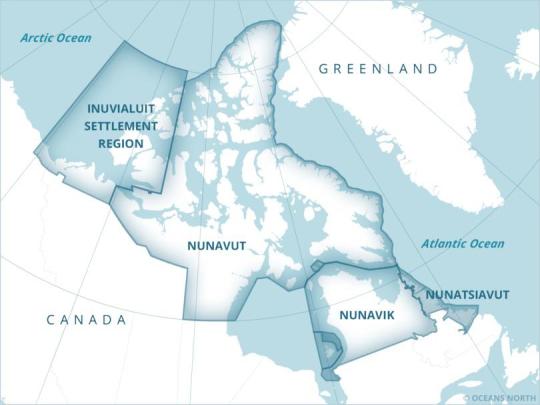
The different arras of the Inuit Nunangat.
bunglejerry:
For those wondering, Nunavut has full status as a territory of Canada; the other three components are semi-autonomous regions of other provinces or territories of Canada. Nunatsiavut is part of Newfoundland and Labrador (the latter, to be specific), Nunavik is part of Québec, and most of Inuvialuit is in Northwest Territories though a small bit is in Yukon.
'Small bit' is a relative term, of course. This is a truly massive area we're talking about.
zone area pop % Inuit
Nunavut 2,039,000km² 36,900 85%
Inuvialuit 435,000km² 5,300 58%
Nunavik 443,700km² 14,000 90%
Nunatsiavut 66,800km² 2,300 88%
That's a total area of 2,985,000km², still a little bit smaller than the Sakha Republic but larger than all but seven countries in the world. And yet a population of less than 60,000.
130 notes
·
View notes
Text
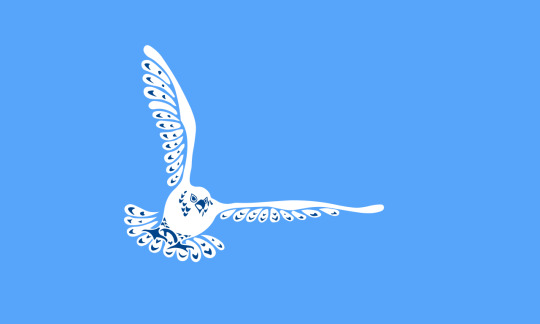

Flag Wars Bonus Round
25 notes
·
View notes
Text
Hetalia ocs I would kill to see (or see more of), in no particular order:
Chukotka
The Yup'ik
Alutiiq/Sugpiag
Sápmi
Occitania
Mongolia
Syria
Armenia
Georgia
Kyivan Rus' (or Ukraine as Kyivan Rus')
Nahua
Persia/Iran
Kurdistan
Manchu/Manchuria
Inuit peoples (Iñupiat, Inuvialuit, Inughuit etc)
Inca
Ethiopia
...... I want a lot, okay?
32 notes
·
View notes
Text
Milan Fashion Week First Indigenous Designers
This Fashion Week in Milan hosted the first Indigenous Showcase. This is the first time Indigenous creators have been invited to Milan Fashion Week. The exhibit was at the White Market and was accompanied by a panel about the Indigenous way.
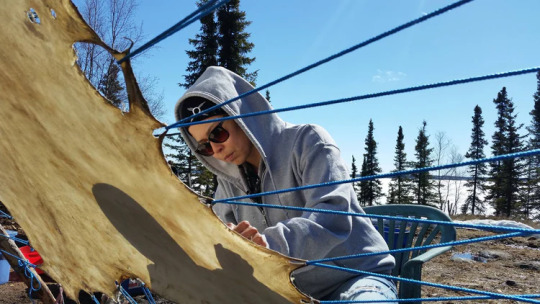
Robyn McLeod, co-owner of fromthelandcreations, with her sister, Shawna. They’re Dene and Metis ancestry and are from Deh Gah Gotie First Nation. Robyn has her brand characterized by Dene Futurism.



Dene Futurism / fromthelandcreations beadwork / Display in the WHITE Market

Justin Louis creative director of Indigenous streetwear brand SECTION 35. He is Samson Cree and was raised on Treaty 6 Land. He is wearing one of the more popular designs of the brand that was on display at Milan. The name section 35 refers to the redraft of the Constitution Act in 1982 to reaffirm Indigenous rights in Canadian law. Early drafts did not include any mention of Indigenous people’s rights or respecting Indigenous relationships.


Jacket by Section 35, earrings by She Was A Free Spirit, moccasins by arcticoceanmocs /Milan Set Up

Evan Ducharme is a Metis creator raised on Treaty 1 land. He has ancestors from Cree, Ojibwe and Saulteaux. His work explores Metis history, pop culture, gender and queerness. Ducharme mixes contemporary and ancestral Metis culture and knowledge in his world to create modern statements and expressions of indigeneity.

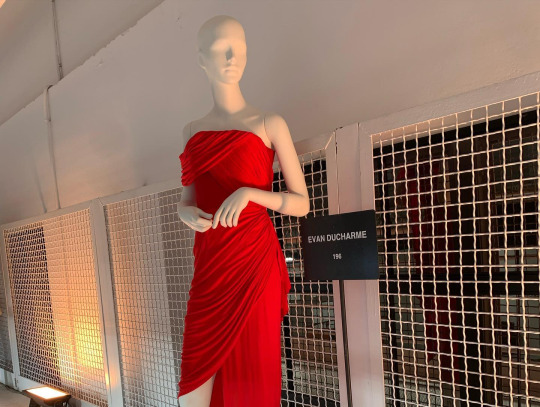
On display in Milan

Niio Perkins is from Akwesasne, New York, Mohawk territory, where she learned how to sew from her seamstress mother in a fashion house. Her mother Elizabeth became popular for her vibrant designs showing Mohawk pride. She uses Haudenosaunee traditional beading method and glass beads to make her intricate pieces shine. For Milan, she released her “Icon” jewellery collection, consisting of some of her most popular pieces throughout the decades. The collection has eight iconic designs and twenty-five pieces.


Traditional Haudenosaunee Woman’s Outfit / From the Icon Collection

Erica Donovan, an Inuvialuk artist from Tuktoyaktuk, North West Territories is the owner and founder of the brand She Was A Free Spirit. She takes inspiration from her culture, her and her ancestors home, and her love for colour. She describes her work as “a vibrant geometric take of my Inuvialuit culture”


Arctic Sky Earrings / Donovan wearing her own earring

Lesley Hampton, an Anishinaabe and Mohawk designer, is a popular artist who made a size-inclusive brand that was worn at the Emmy Award Show and by celebrities like Lizzo. In 2021, she was named the Number One Canadian brand to look out for by Vogue.



Notable Works in Her Exhibit
Photo Credits and Where to Find Them:
Robyn McLeod: (Website) (Insta) (Facebook)
Of Artist
First Photo
Second Photo
Third Photo
Justin Louis / Section 35: (Website) (Insta) (Insta) (Facebook) (Twitter)
Of Artist
First and Second Photo
Evan Ducharme: (Facebook) (Website) (Insta) (Twitter)
Of Artist
First and Second Photo
Niio Perkins: (Website) (Facebook) (Insta)
Of Artist
First and Second Photo
Erica Donovan / She Was A Free Spirit: (Facebook) (Insta) (Website)
Of Artist
First Photo
Second Photo
Lesley Hampton: (Insta) (Website) (Twitter)
Of Artist
First and Second Photo
Third Photo
#milan#milan fashion week#milan fashion show#milan 2023#milan fashion week 2023#milan fashion 2023#milan fashion show 2023#indigenous#native american#aboriginal#metis#fashion#high fashion#mine
40 notes
·
View notes